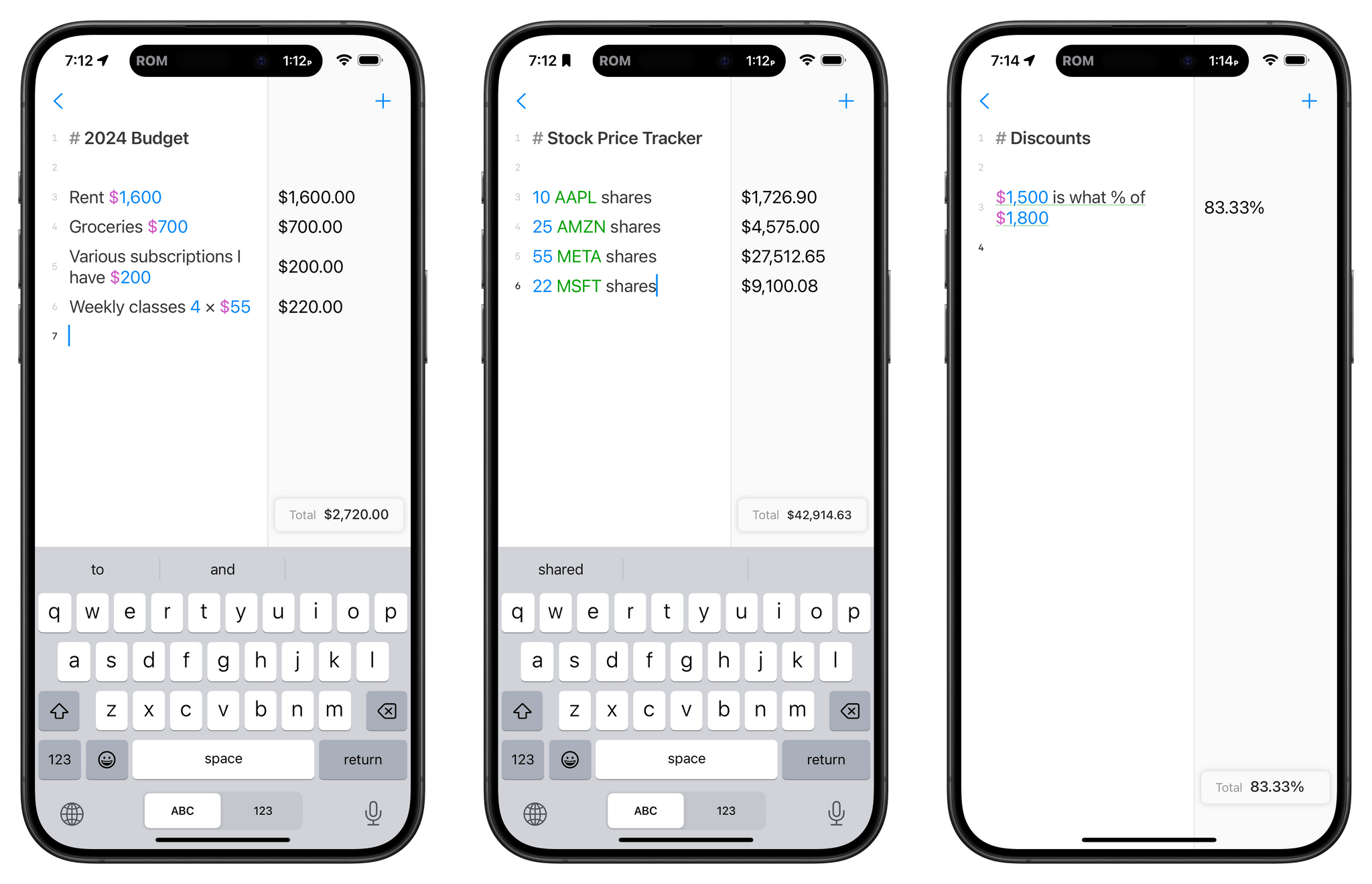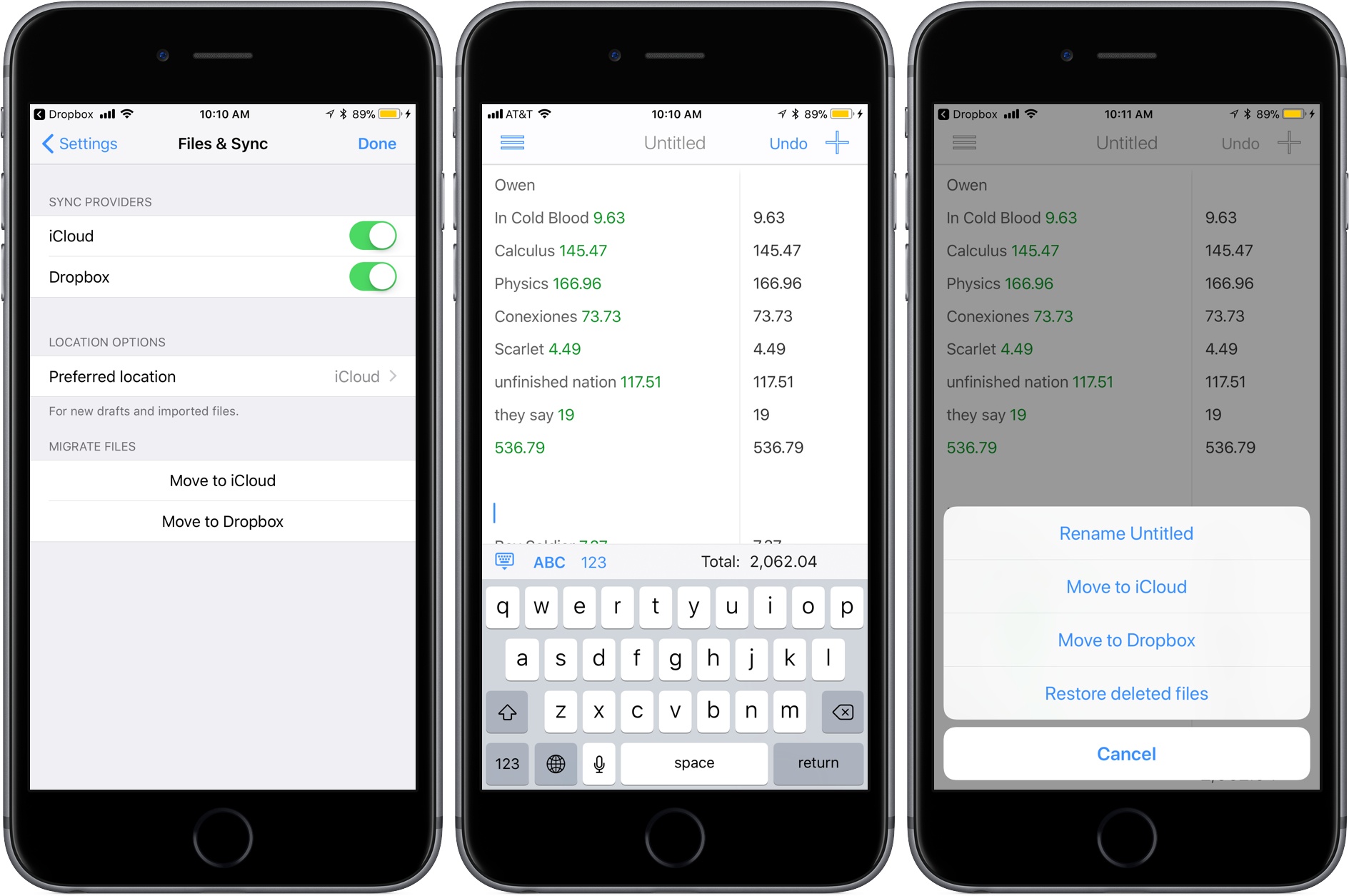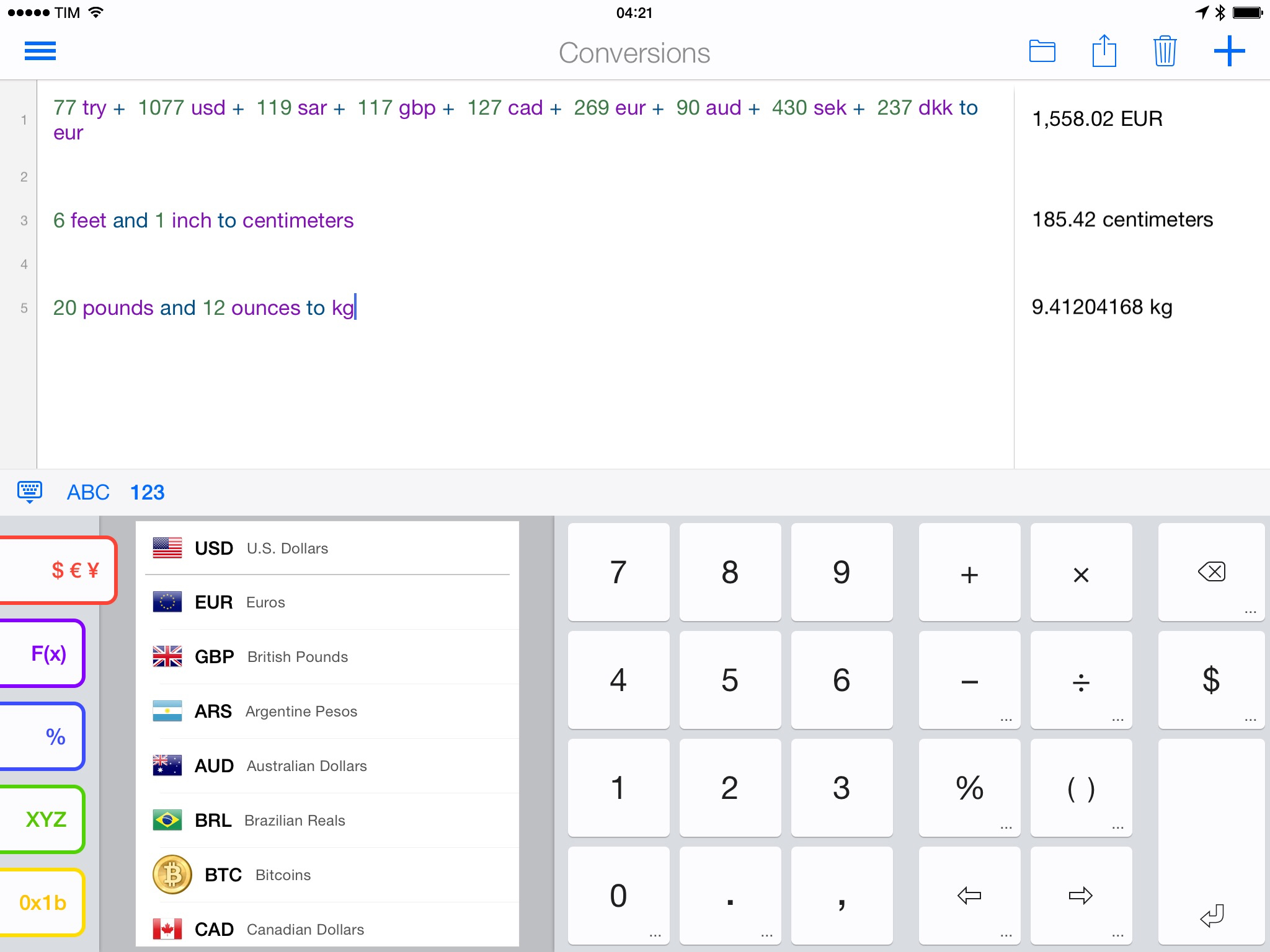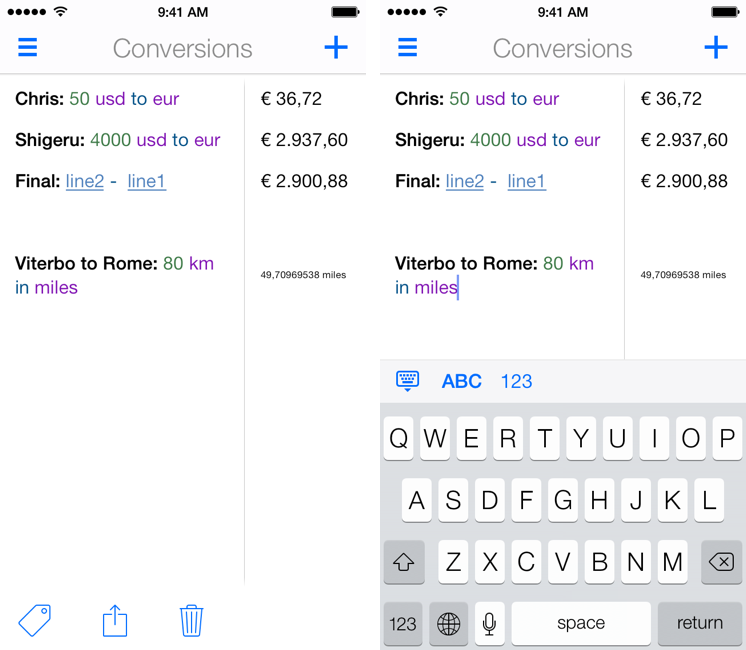Five years ago, Soulver 3, the sheet-based app that serves as a notepad for calculations, launched on the Mac with a long list of new features. In the years since, Acqualia Software launched an iPadOS version of the app and, today, an iOS version.
As I said in my review of the Mac app:
The strength of Soulver lies in its flexibility. Full-fledged spreadsheet apps like Numbers and Excel have their place. However, day-to-day life requires calculations that don’t demand that level of horsepower and benefit from contextualizing numbers with text. It’s the kind of math that happens in notebooks and on the back of envelopes. By combining elements of a text editor, spreadsheet, and plain English syntax, Soulver commits those easily-lost notebook scribblings to a format that allows for greater experimentation and easier sharing.
That’s as true of the iPhone version of Soulver as it was of the app’s other versions, perhaps more so. That’s because many people are more likely to have their iPhone with them than a Mac. With Soulver on iOS for the first time in a long time, it’s easier than ever to explore numerical ‘what-ifs.’ For example, what would my payment be if I refinanced my mortgage? How close am I to spending my budget for that party I’m planning? The possibilities go on and on.











